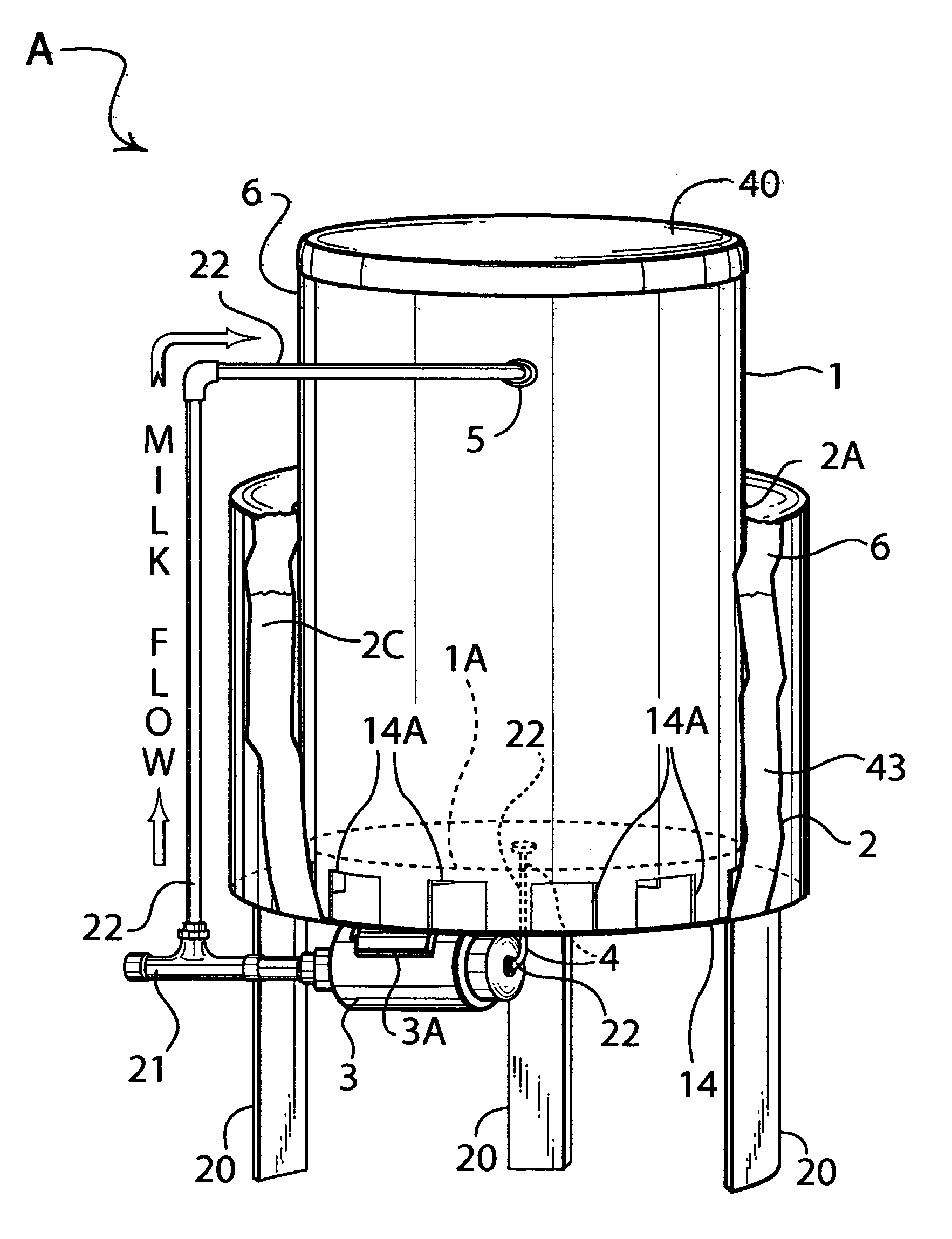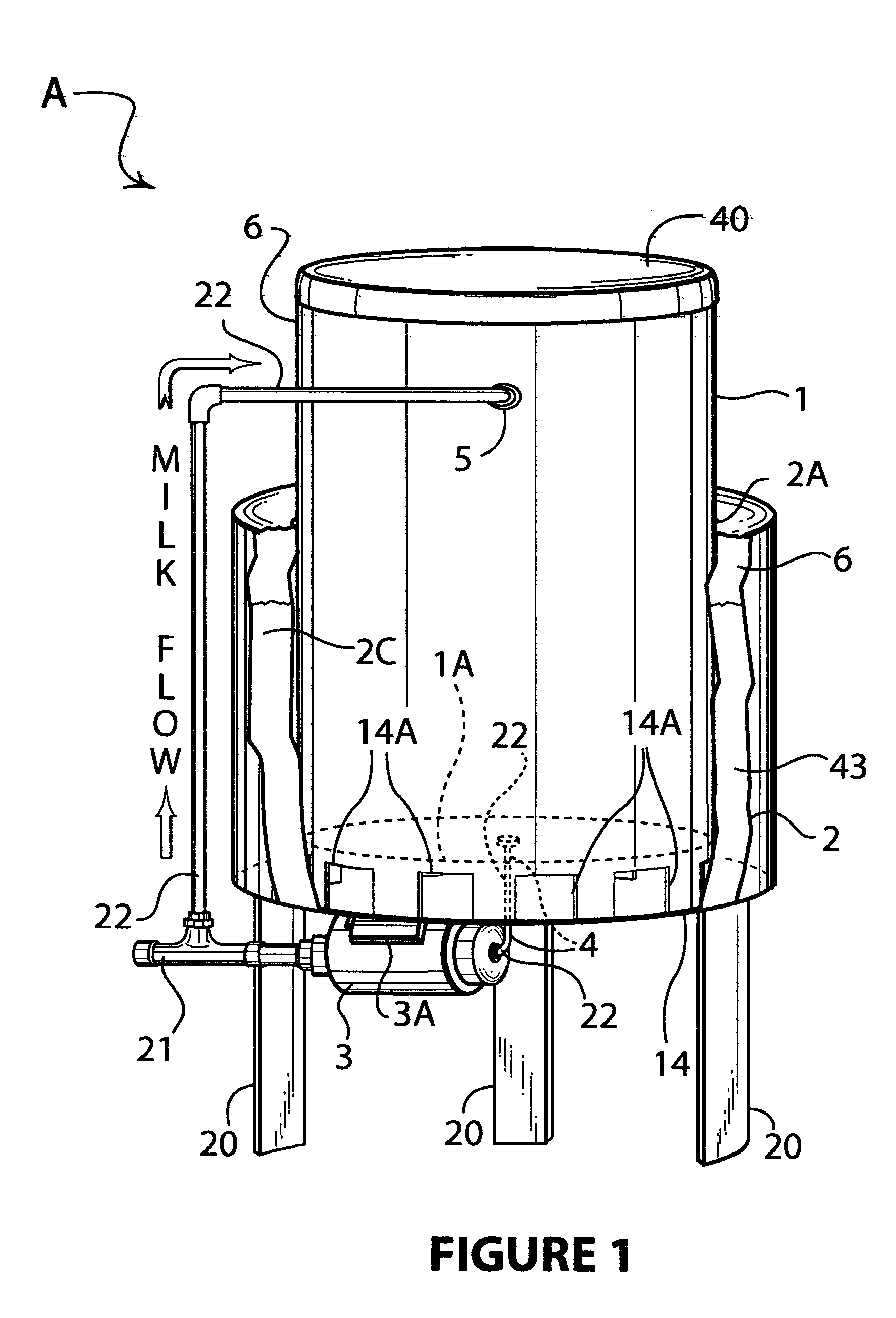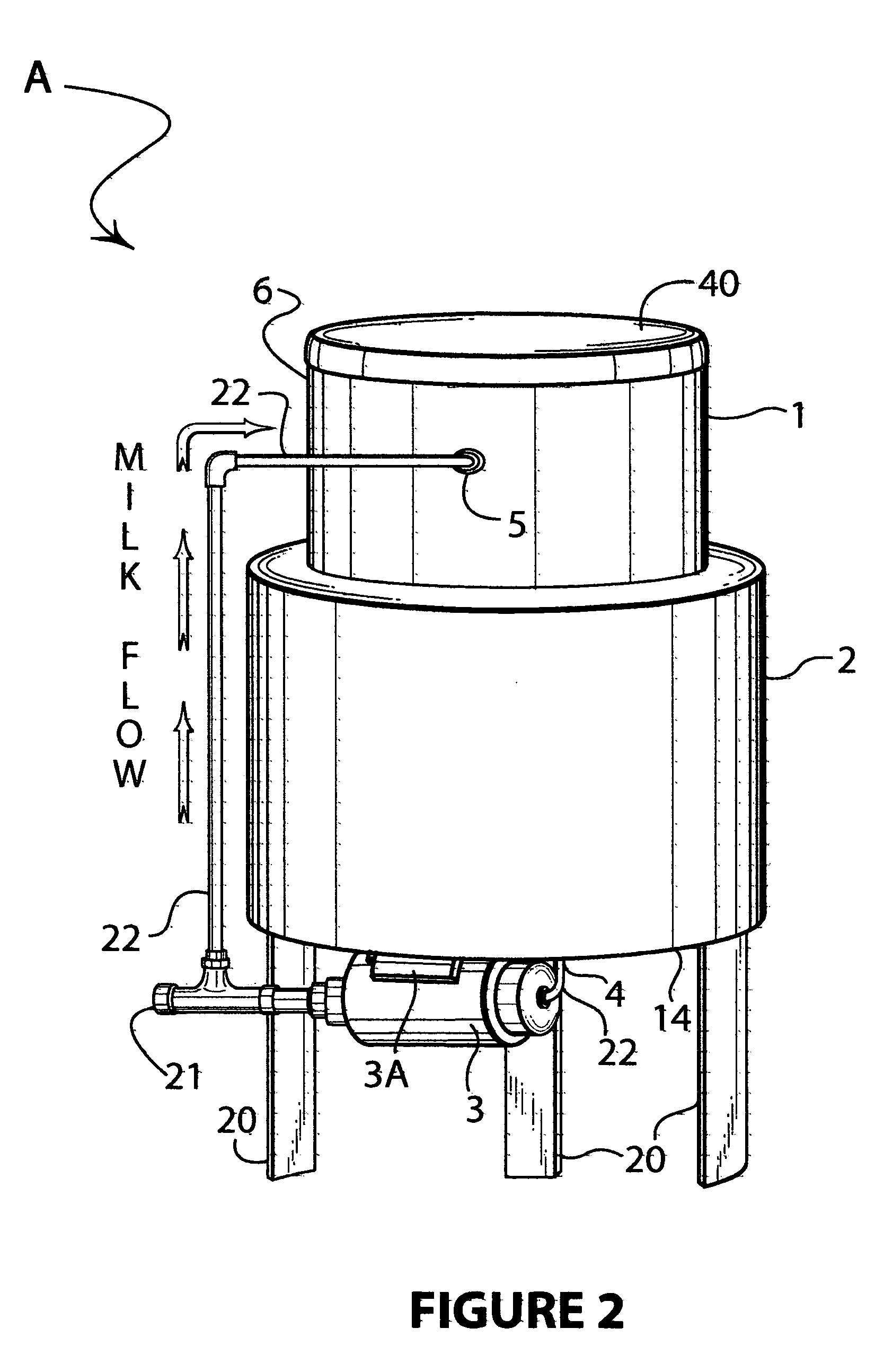Batch pasteurizer
a technology of pasteurizer and batch, which is applied in the direction of chemistry apparatus and processes, milk preservation, mixing, etc., can solve the problems of spoiled or transmitted diseases if not pasteurized, complex and expensive systems, and inability to meet the needs of modern processing plants, so as to reduce the chance of spreading disease, reduce health hazards, and quickly and effectively clean
- Summary
- Abstract
- Description
- Claims
- Application Information
AI Technical Summary
Benefits of technology
Problems solved by technology
Method used
Image
Examples
examples
[0117] The operation and value of the apparatus and methods of the invention will be further illustrated by the following non-limiting examples. Studies done with a Commercial Dairy Tech Model LP 27 based upon Applicant's U.S. Pat. No. 6,276,264 have shown that colostrum can be properly pasteurized. Dairy Tech, Inc. (Applicant's Assignee) provided equipment to be used on a large dairy farm in Colorado. In concert with the University of Minnesota, this independent study was designed to measure the levels of IgG in the colostrum before and after it was pasteurized, typically at 63 deg. C (145.4 deg F.) for about 30 minutes. The serum IgG levels were then measured in the calves that received the product to make certain that absorption occurred as well. From this study Applicant learned that the product was adequately pasteurized to remove harmful pathogens, and that the calves received enough IgG from the pasteurized product to confer proper immune status. Results of this study were pu...
PUM
 Login to View More
Login to View More Abstract
Description
Claims
Application Information
 Login to View More
Login to View More - R&D
- Intellectual Property
- Life Sciences
- Materials
- Tech Scout
- Unparalleled Data Quality
- Higher Quality Content
- 60% Fewer Hallucinations
Browse by: Latest US Patents, China's latest patents, Technical Efficacy Thesaurus, Application Domain, Technology Topic, Popular Technical Reports.
© 2025 PatSnap. All rights reserved.Legal|Privacy policy|Modern Slavery Act Transparency Statement|Sitemap|About US| Contact US: help@patsnap.com



